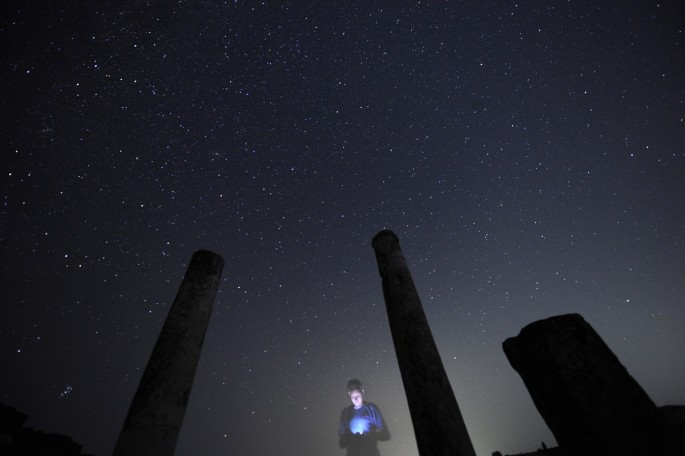Mark your calendars, sky gazers! May 2016 is set to bring some spectacular celestial views. The night sky will host an above average Eta Aquarids meteor shower. In addition, astronomy enthusiasts will be able to witness the rare transit of Mercury across the Sun. Here is a guide to the major sky events occurring in the month of May. Read on for the details.
New Moon: May's New Moon will rise on May 6, Friday. The periodical phenomenon will reach its peak at 19:29 UTC, according to Seasky.org. During this time of the month, the moon remains invisible and the sky remains dark. Therefore, it is the best time to observe other celestial objects in the sky.
Full Moon: May 2016 Full Moon is also known as Blue Moon because it is the third of four full moons in this season. It is said there are only three full moons in a season. However, once in a while fourth full moon emerges and it is called Blue Moon. Such an event is reportedly rare, occurring every few years. Thus the phrase "once in a blue moon."
The moon remains the brightest and appears biggest on this day as it is placed opposite Earth as the Sun. It is also called Full Flower Moon, Milk Moon, Full Corn Planting Moon and more.
Eta Aquarids Meteor Shower: Stargazers must brace themselves to witness one of the finest meteor showers of the year. Since it will take place close to New Moon, there will be no moonlight hindering the stunning view of the above average shooting star event.
Eta Aquarids will peak May 5 and 6 and it will be mostly visible in Southern Hemisphere. However, Northern Hemisphere will get a glimpse of it before dawn, according to Earth Sky.
The best view will be available during the early morning hours from May 4 to May 7. It is believed to originate from comet Halley debris and its radiant point lies close to constellation Aquarius. And it derives its name from the star called Eta Aquarii.
Eta Aquarids is expected to produce 40-50 shooting stars per hour in Southern Hemisphere. As for Northern Hemisphere, it reduces to 10-20 meteors per hour.
No special equipment is required to witness the meteor shower. However, it is advised to observe the event from a dark location that is away from the city lights.
Transit of Mercury: On May 9, Mercury will move across the Sun and sky watchers on Earth will be able to observe the movement through telescopes with special filters. The last transit took place on Nov. 8, 2006, and the next will occur on November 11, 2019.
Mercury will take some 7.5 hours to move across the Sun's disk and it will be visible from eastern part of North America, South America, Greenland, Iceland, Western and northern part of Europe, the Arctic, and most part of Asia. It will begin at 11:10 UTC and end at 18:44 UTC, according to Time and Date.
In addition, Mars will be at opposition and at its closest approach to Earth on May 22. It is the best time to observe the planet as it appears the brightest on this day and will be visible the entire night. Also, International Astronomy Day will be celebrated on May 14. On this day, several events are organised to make people aware of special astronomical events and phenomena.



























